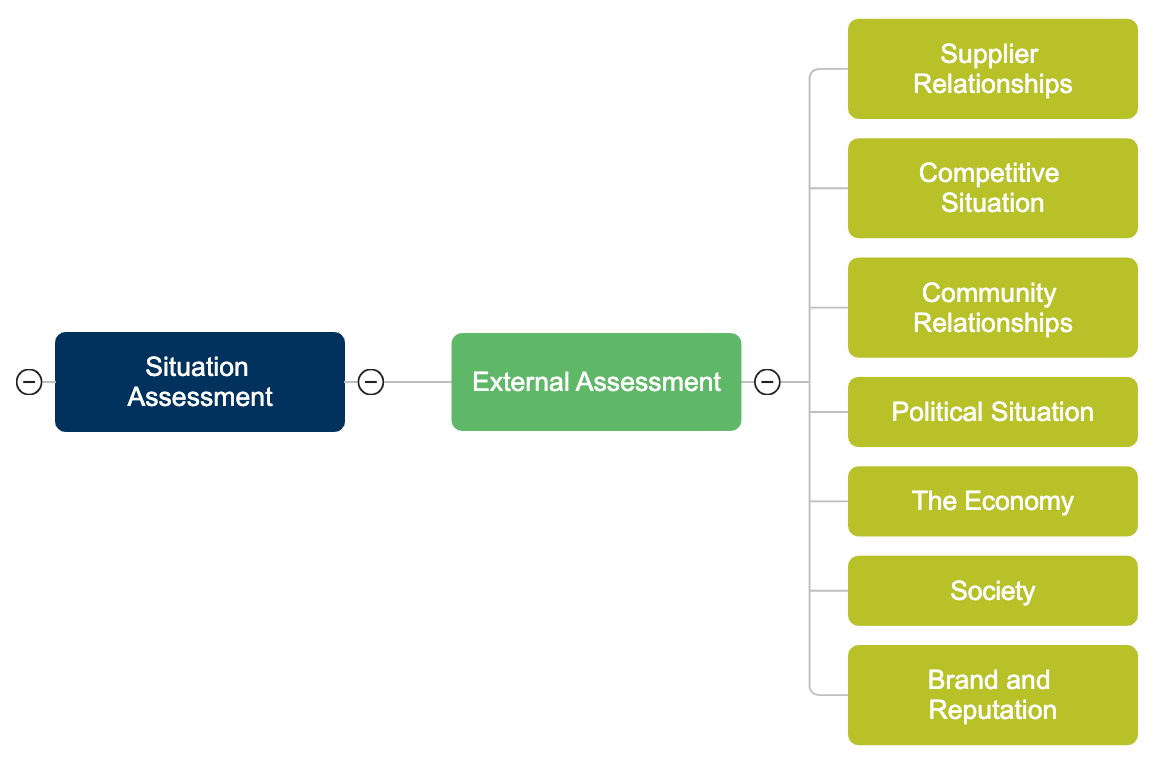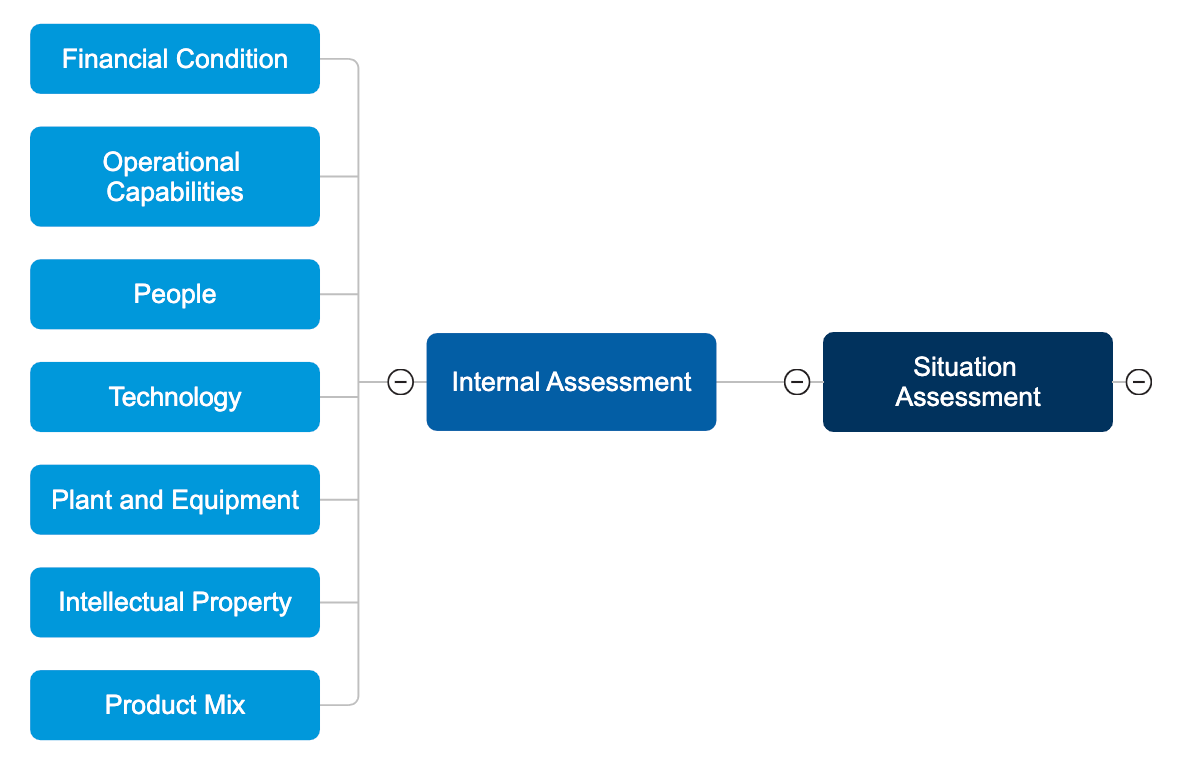How Visual Aids Facilitate Strategic Thinking & Planning
Written by Fred Nickols
The title of this article suggests that visual aids can facilitate strategic thinking and planning and indeed they can. They can help focus thinking and discussion; they can clarify complex relationships; and they can illustrate abstract concepts. As the old saying has it, "A picture is worth a thousand words" (or at least that can be the case).
But focus for a moment on the word "facilitate." Visual aids can help and in so doing add considerable value but they are no substitute for thinking itself. It is also the case that strategic thinking and planning are not just important areas of endeavor, they are also quite complex and they cover a lot of ground. No single article can cover all that ground. So, in this article we'll focus on a classic component of strategic planning: SWOT analysis.
SWOT is an acronym derived from four words: Strengths, Weaknesses, Opportunities and Threats. All are related to that phase or stage of the strategic planning process in which the planners take stock of or assess the situation. Strengths and Weaknesses are identified based on an internal assessment and Opportunities and Threats are determined from an external assessment. So far so good; but what do you assess? Well, there is where a visual aid can help.
Consider Figure 1 below. It is the first stage of a mind map that we will build using SmartDraw's built-in mind map capability.

Figure 1
As Figure 1 shows, a situation assessment has two main components: (1) an internal assessment and (2) an external assessment. In this diagram, shapes and fill colors are used to distinguish between areas or levels of the analysis.
Figure 2 illustrates an elaboration of the external assessment. Again, shapes and colors are used to distinguish between levels or areas. Each additional area was easily added. More important, the ease with which they were added facilitated quickly generating a list of areas in response to a basic question; namely, "What is it I want to know about the external situation?" Well, I want to know about the quality and nature of our customer relationships. Ditto for suppliers and the community. I want to know about the competitive situation. What are our competitors up to? Where are we gaining ground and where are we losing out? What's the political situation? Is there any pending legislation that might impact us? Are there regulations coming down the pike that we will had to accommodate? I want to know about the economy. What's going on with interest rates? Inflation? The availability of capital? Spending patterns? I also want to know what's going on with technology. Where is there technology available that we could be using but aren't? Where are breakthroughs imminent? And, of course, I want to know about my company's brand strength, its general reputation (e.g., for service and quality) and where we might be vulnerable.

Figure 2
In short, I want to know a lot about a lot of things and a mind map is a great visual aid for generating my "wish list" if you will and for keeping things organized. It is simple matter to "drill down" even further and add the specific questions I (or some other planner or group of planners) wants answered.

Figure 3
A similar approach can be taken to the assessment of internal factors (see Figure 3). Again, my thinking is helped along by the ease with which I can generate and organize possibilities. What's my financial condition? How good are our operational capabilities? What is the caliber of our people? Where and how are we making use of technology and how current or out-of-date is it? What's the condition of our plant and equipment? Is it antiquated? Held together by chewing gum and baling wire? Do we have any noteworthy intellectual property such as patents? What's our product mix or our mix of service offerings? On and on go the questions and making it easy to generate, capture, organize and display them is a big benefit.
Figure 4 below shows both components of the situation analysis.

Figure 4
A logical next step would be to elaborate upon the mind map in Figure 4, adding specific questions at the next level, all the while keeping it organized. (Contrast in your imagination the diagram above with all the prose it would take to describe it.)
And what can you do with this? Well, for one thing, you can use the mind map component in SmartDraw to create a similar visual that fits your company. For another, you could elaborate upon that and "drill down" to specific questions your company needs answered as part of its situation assessment. Finally, you can keep in mind that there is no ready-made SWOT analysis, or PEST analysis, or Situation Assessment (SA) lying around that you can simply pick up and use. You must fit the tool to your company and visual aids, especially a easy-to-use graphics software package like SmartDraw can get you off and running on that score.
About the Author: My name is Fred Nickols. I am a writer, an independent consultant and a former executive. Visual aids of one kind or another have played a central role in my work for many years. My goals in writing for SmartDraw's Working Smarter blog are to: (1) provide you with some first-rate content you can't get anywhere else, (2) illustrate how important good visuals can be in communicating such content and (3) illustrate also the critical role visuals can play in solving the kinds of problems we encounter in the workplace.